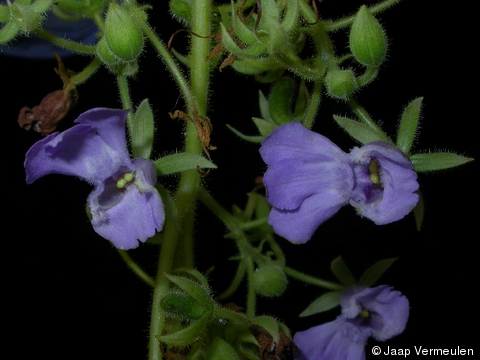| Citation |
|
Description |
Geographic Range [top]
Range Description: This species occurs in Viet Nam only, in the Kien Giang Province, on the hills Nui Bai Voi, Nui Khoe La, Nui Hang Cay Ot, and Nui Ba Tai. The EOO and the AOO is 20 km², (estimated with GeoCat using a 2x2 km grid cell raster). However, the actual area occupied by the species is estimated to be 2 km² (the sum of the ground surface of the limestone hills from where the species is recorded, measured with Google Earth Pro). Of this area 0.8 km² has already been lost through quarrying and habitat degradation, and a further 1 km² will be lost when Nui Bai Voi and Nui Khoe La are quarried to the limits of the concessions during the next decade (based on planning of concession holder HVL, and field observations within adjacent concessions by Vermeulen J. et al., 11/2014) and Nui Ba Tai is given in concession.
Countries occurrence:
Native:
Viet Nam
Additional data:
? Estimated area of occupancy (AOO) - km2: 2-20 ? Continuing decline in area of occupancy (AOO): Yes
? Estimated extent of occurrence (EOO) - km2: 20
? Continuing decline in extent of occurrence (EOO): Yes
? Number of Locations: 4
? Lower elevation limit (metres): 10
? Upper elevation limit (metres): 50
Range Map: Click here to open the map viewer and explore range.
Population [top]
Population: On three hills the species occurs in small numbers. On Nui Bai Voi and Nui Hang Cay Ot subpopulations have fallen victim to quarrying. On both hills, small subpopulations occur on parts of the hills excluded from quarrying concessions. However, in November 2015 no individuals could be found there during the height of the flowering season (pers. comm. J.J. Vermeulen). Most of Nui Khoe La will be quarried in the near future, including the localities where the species was observed. A flourishing subpopulation of several hundred individuals occurs on Nui Ba Tai (0.2 km²), at the foot of a rock face bordered by deep mangrove swamp and therefore rather inaccessible. This subpopulation includes at least hundreds of individuals (Vermeulen J. et al 2015).
Although the subpopulation on Nui Ba Tai is relatively large, the other three subpopulations are small and are close to extinction. The four subpopulations are separated by large areas of unsuitable habitat and since the seeds from this plant are just scattered from dry capsules with no adaptation to animal or wind dispersal, it is extremely unlikely that seeds could easily disperse between subpopulations (D. Middleton, pers. comm. 2016). Therefore, the population is considered to be severely fragmented.
Current Population Trend: Decreasing
Additional data:
? Continuing decline of mature individuals: Yes
? Population severely fragmented: Yes
Habitat and Ecology [top]
Habitat and Ecology: This species grows on karst limestone rocks.This species is monocarpic and is only conspicuously present during the wet season. It grows in crevices in otherwise bare, but shaded rock surfaces, in minimal accumulations of soil. Populations often grow near the foot of the hills, where they are vulnerable to disturbance.
Systems: Terrestrial
Continuing decline in area, extent and/or quality of habitat: Yes
Threats [top]
Major Threat(s): The habitat where this species is found has suffered from human impacts such as small scale agriculture (Middleton and Ly 2008). In at least one of the dolines there has been firewood collection, the caves are sometimes used, and there have been problems with invasive alien species. Lime exploitation and cement production have been especially devastating. The threats for each location are described individually:
Nui Ba Tai is not quarried at present, but at risk. Contested by a chemicals company for quarrying, by the army for unknown purposes, and by Provincial authorities for conservation (pers. comm. Brunner, IUCN Vietnam, 3/2016).
Nui Hang Cay Ot is quarried at present. The westernmost part, mainly bare rock and of limited biodiversity value, will be conserved for tourism (Vermeulen, J. et al. 11/2015).
Nui Khoe La is quarried at present by 3 companies. The northern part is within concession of HVL and is quarried. The southernmost part is contested by the army for unknown purposes (Vermeulen, J. et al. 11/2015).
Nui Bai Voi is quarried at present by HVL; new parts of the hill within the concession are being stripped in preparation for quarry extension (pers. obs. Vermeulen, J. 11/2015). Only the northern part is safe, but under heavy pressure of touristic exploitation and population pressure, resulting in pollution and progressive degradation of environment (Vermeulen, J. et al. 11/2015).
Invasive alien species are listed as a general threat (Truong et al 2004).
The Ba Tai population is crucial for the survival of the species. All other localities soon will no longer provide suitable habitat for the species, even if parts of the localities are excluded from quarrying.
Conservation Actions [top]
Conservation Actions: This species is not found in any protected areas. A proposal to protect some of the area has been put forward, however, it is not protected yet (Q.T. Truong pers. comm. 2011). Inclusion of Nui Ba Tai in a conservation area is crucial for the survival of the species.
Citation: Middleton, D. & Vermeulen, J.J. 2016. Ornithoboea emarginata. The IUCN Red List of Threatened Species 2016: e.T201790A89661984. http://dx.doi.org/10.2305/IUCN.UK.2016-1.RLTS.T201790A89661984.en. Downloaded on 13 March 2018.
Disclaimer: To make use of this information, please check the .
Feedback: If you see any errors or have any questions or suggestions on what is shown on this page, please provide us with feedback so that we can correct or extend the information provided
|

